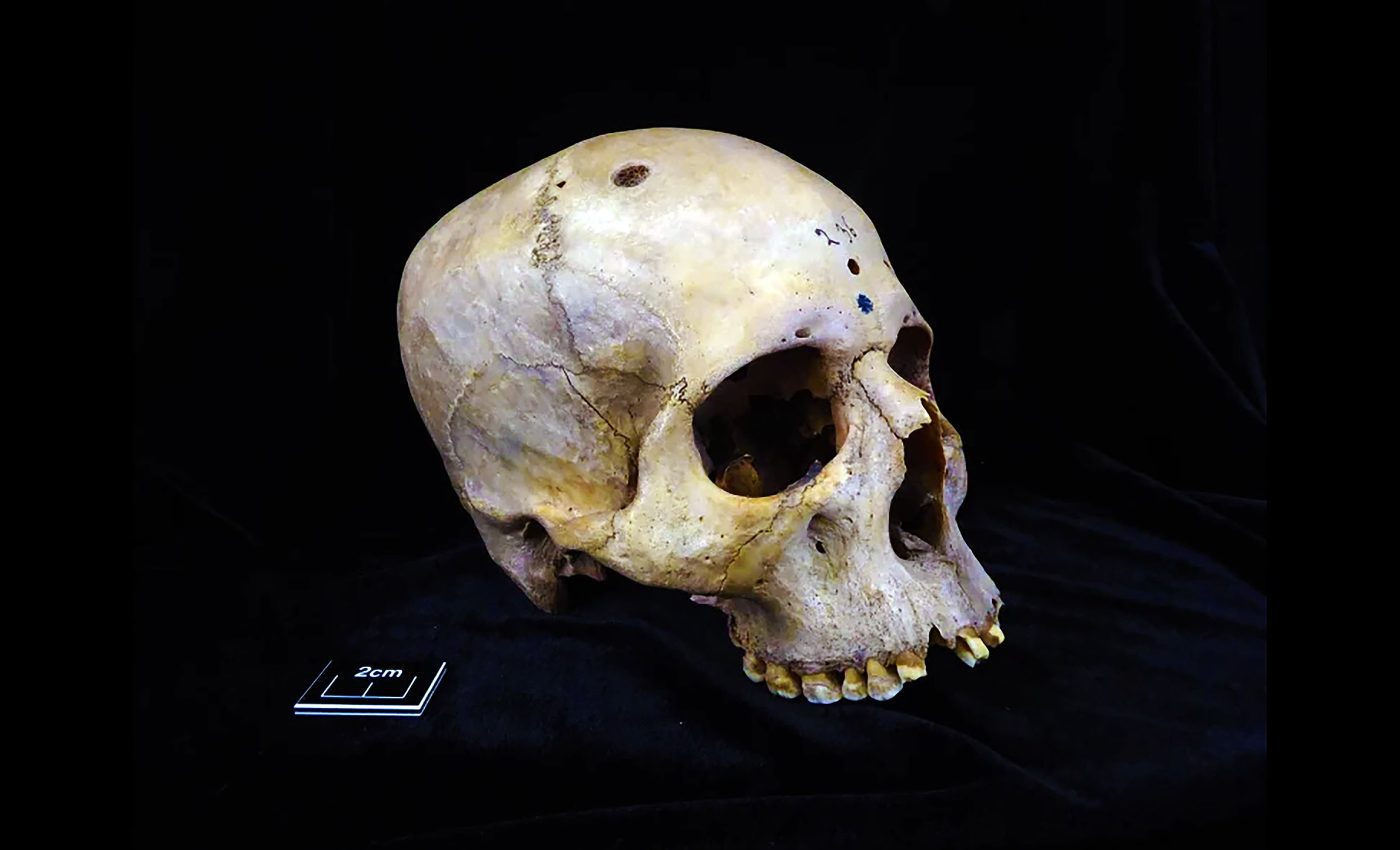
4000-year-old skulls reveal ancient Egyptian attempts at cancer treatment
The ingenuity of ancient Egyptian medicine in treating a variety of ailments, including cancer, is well documented through historical texts and archaeological discoveries.
Known for their advanced medical techniques, the Egyptians excelled at addressing traumatic injuries and complex diseases.
They were pioneers in using prostheses and performing intricate procedures like dental fillings. However, their approach to more elusive conditions, such as cancer, continues to be a subject of fascination and study.
Ancient Egyptians treating cancer
A recent investigation into the medical practices of ancient Egyptians, led by researchers from the University of Tübingen, has shed light on their attempts to treat cancer.
The study examined two ancient skulls that reveal significant findings about the medical challenges and innovations of that era.
“Although ancient Egyptians had a grasp on treating complex cranial fractures, cancer was still a medical frontier barely touched upon by their knowledge,” explained Tatiana Tondini, a researcher and the first author of the study.
These findings were published in a leading medical journal, adding a profound layer to our understanding of historical medical practices.
Evidence from the skulls
The team’s research centered around two skulls from the University of Cambridge’s Duckworth Collection.
The first skull, dated between 2687 and 2345 BCE, showed evidence of a neoplasm — a big-sized lesion indicative of excessive tissue destruction, and multiple small, round metastasized lesions across the skull.
Remarkably, around these lesions were cutmarks likely made by a sharp metal instrument.
“When we first observed these cutmarks under the microscope, we were astonished,” recounted Tondini. It appears that these early medical practitioners might have attempted some form of surgical intervention in response to cancerous growths.
“This discovery offers unique evidence of ancient Egyptian medicine’s attempts to tackle or investigate cancer more than 4,000 years ago,” added Prof Edgard Camarós, the study’s lead author and a noted paleopathologist.
Cancer through the ages
The second skull, dating from between 663 and 343 BCE, belonged to a female over 50 years old and displayed a large lesion consistent with a cancerous tumor.
This skull also bore signs of healed traumatic injuries, possibly from a violent event involving a sharp weapon, suggesting that the individual had received treatment that led to recovery.
The presence of such injuries in a female skull raises intriguing questions about gender roles in ancient conflicts.
“Was this female individual involved in warfare activities? If so, we must rethink the role of women in the past and their active participation in conflicts during antiquity,” Tondini pointed out.
Challenges and future directions
Despite these fascinating insights, the researchers caution that studying skeletal remains presents significant challenges.
The incomplete nature of remains and the absence of clinical history often complicate definitive conclusions.
“In archaeology, we work with a fragmented portion of the past, which complicates an accurate approach,” emphasized Prof Albert Isidro, a co-author and surgical oncologist who specializes in Egyptology.
Nevertheless, this study not only enriches our understanding of ancient medical practices but also establishes a promising foundation for future research in the field of paleo-oncology.
Exploring ancient Egyptian cancer treatments
This study not only highlights the experimental nature of ancient Egyptian medical practices but also underscores the continuity of human curiosity and endeavor across millennia in understanding and combating cancer.
“More studies will be needed to untangle how ancient societies dealt with cancer,” concluded Camarós, pointing towards an encouraging future for research in this intriguing area of study.
More evidence on ancient cancer treatments
Ancient cancer treatments extended beyond Egypt, with varied approaches across different cultures. The Edwin Smith Papyrus, an Egyptian medical text, mentions treatments for tumors using cauterization and poultices.
However, the understanding of cancer was rudimentary, and it was often attributed to supernatural causes.
In ancient Greece, Hippocrates referred to cancer as “karkinos,” suggesting surgical removal as a potential treatment.
Galen, a Roman physician, believed in balancing bodily humors and used dietary changes and herbal remedies to treat cancer symptoms.
In India, ancient texts like the Sushruta Samhita discussed surgical techniques for removing tumors, while Ayurveda prescribed herbal treatments and lifestyle changes to manage the disease.
Traditional Chinese Medicine viewed cancer as a result of energy imbalances, treating it with acupuncture, herbal medicine, and dietary adjustments.
Although these early efforts lacked the precision of modern medicine, they laid the groundwork for understanding and addressing cancer, highlighting humanity’s enduring quest to combat this disease.
The full study was published in the journal Frontiers in Medicine.
—–
Like what you read? Subscribe to our newsletter for engaging articles, exclusive content, and the latest updates.
Check us out on EarthSnap, a free app brought to you by Eric Ralls and Earth.com.
—–














